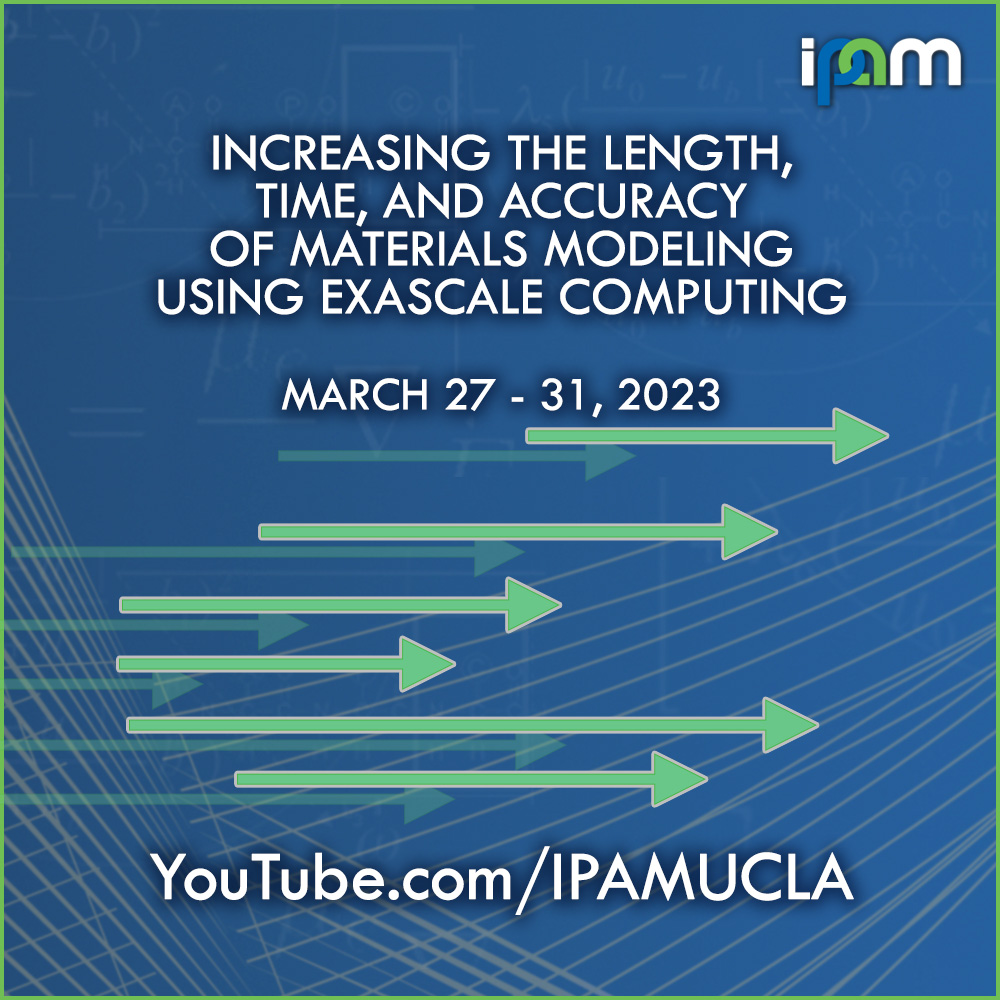Aidan Thompson - LAMMPS simulation: physics models, machine-learning potentials, exascale computing
Presenter
March 27, 2023
Abstract
Recorded 27 March 2023. Aidan Thompson of Sandia National Laboratories presents "The LAMMPS particle simulation package: Bringing together innovative physics models, machine-learning interatomic potentials, and extreme-scale computing resources" at IPAM's workshop Increasing the Length, Time, and Accuracy of Materials Modeling Using Exascale Computing
Abstract: Molecular dynamics (MD) is a powerful materials simulation approach whose accuracy is limited by the interatomic potential (IAP). The quest for improved accuracy has resulted in a decades-long growth in the complexity of IAPs, many of which are now implemented in Sandia's LAMMPS MD code[1]. Traditional physics-based IAPs are now being rapidly supplanted by machine-learning IAPs. In 2015 we published the SNAP (Spectral Neighbor Analysis Potential) machine-learning approach and released it in LAMMPS, providing an automated methodology for generating accurate and robust application-specific IAPs [2]. SNAP is formulated in terms of a set of general four-body descriptors that characterize the local neighborhood of each atom. This approach has been used to develop potentials for diverse materials, including metals (Ta, W), metal alloys (AlNbTi), III-V semiconductors (InP), plasma-facing materials (W/Be/He/H/N), and even magnetic materials such as iron. Each SNAP IAP is trained on quantum electronic structure calculations of energy, force, and stress for many small configurations of atoms. Cross-validation analysis and evaluation on test problems are used to further improve IAP fidelity and robustness. Varying the number of SNAP descriptors allows a continuous tradeoff between computational cost and accuracy. The resultant potentials enable high-fidelity large-scale MD simulations of these materials, yielding insight into their behavior on lengthscales and timescales unreachable by other methods. The relatively large computational cost of SNAP is offset by combining LAMMPS' spatial parallel algorithms with Kokkos-based hierarchical multithreading, enabling the efficient use of Peta- to Exa-scale CPU and GPU platforms, allowing large-scale production simulations on the DOE Summit supercomputer at 30 ns/day with millions to billions of atoms. Finally, I will discuss opportunities to expand the flexibility of the SNAP approach by combining SNAP descriptors with neural network energy models, as well as replacing SNAP descriptors with the more general Atomic Cluster Expansion descriptors.
[1] Thompson et al., Comp. Phys. Comm., 271:108171, 2022. http://dx.doi.org/10.1016/j.cpc.2021.108171
[2] Thompson et al., J. Comp. Phys., 285:316, 2015. http://dx.doi.org/10.1016/j.jcp.2014.12.018
Learn more online at: http://www.ipam.ucla.edu/programs/workshops/workshop-i-increasing-the-length-time-and-accuracy-of-materials-modeling-using-exascale-computing/
